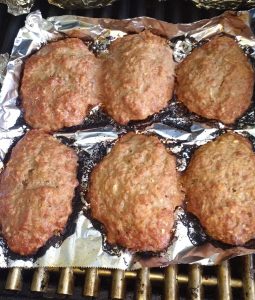Category: Hunting Blog
Venison Quiche Recipe
This recipe was inspired by the Warm You Up Sausage Quiche recipe here. Venison Quiche is a cool weather favorite at my house. It makes two very hearty quiches. I usually have plenty of leftovers!
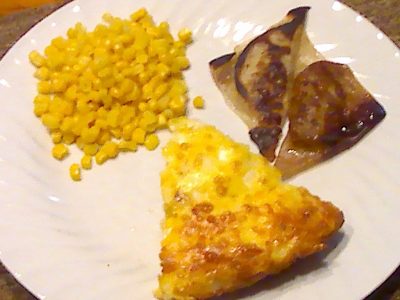
If I know it will be a hectic day I pre-cook the venison and sausage and put it in the fridge. I simply take the meat mixture out of the fridge 15 minutes prior to making so it comes up to room temperature. I make one quiche with mushrooms and one without to accommodate the mushroom haters in my family.
When these come out of the oven be sure you are ready to eat! The baking powder gives the quiches that wonderful “puffy” delicious look but it only lasts for a few minutes before it begins to settle.
Venison Quiche Recipe
Ingredients:
1 pound ground venison, cooked
½ pound breakfast sausage, cooked and drained
12 eggs, beaten
½ cup flour
1 teaspoon baking powder
16 oz. small-curd cottage cheese
¼ cup melted margarine
3 cups shredded co-jack cheese
½ cup chopped onion, cooked until soft
4 oz sliced fresh mushrooms
Instructions:
- Grease two 9-inch round baking dishes.
- Mix ground venison and breakfast sausage together evenly.
- In a large bowl combine eggs, flour and baking powder together thoroughly.
- Add cottage cheese, melted margarine, shredded cheese and onion to egg mixture.
- Spread sliced mushrooms into bottom of one dish.
- Spread ½ of meat mixture evenly into each dish.
- Spread ½ of egg mixture evenly into each dish. Dishes will be very full.
- Cook in 375 degree oven for 35 – 40 minutes or until a knife inserted near the center comes out clean.
Enjoy!
Jamie, GrowingDeer
Should Deer Hunters Shoot “Cull Bucks”?
Every year hunters put out trail cameras hoping to discover a Boone & Crockett buck is calling their land home. For most of us, it is more likely we see pictures of a deer that has some sort of antler abnormality than a true Booner. The cause behind odd or non-typical antler growth boils down to two main factors, injuries and genetics.
Injuries to the body, pedicles and the antler itself during velvet all have the capability to cause an antler abnormality. The good news is that two of the three (pedicle injuries being the oddball) are typically short term as the deer will grow a normal set of antlers the following season. Abnormal antlers caused by genetics will not “heal”; the buck will likely have unique antlers for life.
This brings me to the often debated subject of the “cull buck.” There has been a long held belief that in order to improve a local deer population, it is necessary to shoot cull bucks. Should you shoot a cull buck? No and yes. If your goal is to eliminate a buck from the population because you want a better gene pool, you are fighting a losing battle. In a wild, free-ranging population it is impossible to control what genes are being passed down because you are not controlling what buck breeds with what doe. More importantly does carry most of the heritable antler traits. However, there’s no way by looking at a doe to know if her offspring consistently produce larger than average antlers.
At The Proving Grounds there’s a buck named Cactus Jack that some might consider a cull buck. We have pictures of Cactus Jack from multiple seasons and his antlers are probably the result of a testes injury. This is commonly the cause of “cactus” bucks. Cactus Jack is most likely four years old and we will happily harvest him this season if given the opportunity. If he was three and a half years old or less, we would pass. Even though one of our goals is to reduce the local herd population, harvesting bucks only has a short term impact.
It is much more effective to harvest does to reduce the population. Besides, even bucks with odd shaped antlers usually produce larger antlers as they mature!
Weston Mason
Deer Hunting Tips: Grunt Calling And Vocalizations
Recently James Harrison and I sat down to do a Facebook live. James is a World Champion turkey caller. Those calling skills don’t end in the turkey woods. James is also an expert deer caller!
The focus of the live event was deer vocalizations that will help hunters get deer in range throughout the whole season.
Watch the video below (and listen carefully to the vocalizations) to learn about: early season, pre rut, rut, and post rut calling strategies, calls for different habitats, blind calling, strength/volume for calling, timing, and more!
Cooking Venison: A Recipe To Enjoy With Cooler Fall Temperatures
In previous blogs, I’ve shared how I am learning to cook venison in the Instant Pot. As cooler temperatures have arrived, I transitioned a favorite “comfort food” recipe for Cubed Venison Stew to an Instant Pot recipe. A recipe that once took all afternoon to simmer was cooked and ready to eat in under an hour (prep time approximately another 15 minutes). If you don’t have an Instant Pot I’ve also included stove top directions. If you like stewed beef and rice, you will LOVE this recipe for venison.
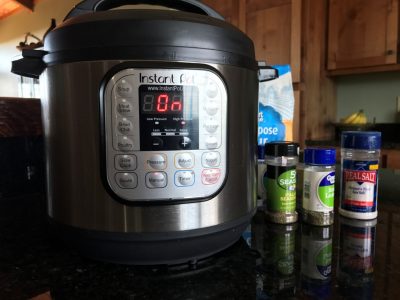
Savory Cubed Venison Stew: An Instant Pot Recipe
Ingredients:
Herb mayonnaise:
Mix together in a separate bowl:
1 ½ cups Mayonnaise
1 ½ tablespoons Italian seasoning blend
Seasoned Flour:
Mix together in a separate bowl:
2 cups all purpose flour with the following herbs: ½ tsp. garlic, ½ tsp. thyme, ½ tsp. basil, ½ tsp. oregano (OR 1 ½ – 2 tsp. Italian seasoning blend + the garlic), and salt and pepper to taste.
Stew Mixture:
2 lbs. venison roast cut into 1 inch cubes
1 tablespoon canola oil
2 celery sticks roughly chopped/sliced
½ cup onion, chopped
2 cups water
4 beef bouillon cubes
2 tsp. thyme
1 bay leaf
¾ stick butter
Salt and pepper to taste
Directions:
- Set the Instant Pot to sauté function, add canola oil.
- Mix Italian herb blend into the mayonnaise to make an herb mayonnaise. Dredge the cubed venison in the seasoned flour.
- Place venison into the Instant Pot. Cook for 2 minutes. Add the onion and celery. Let the floured venison brown just slightly. It’s better to err on being barely brown than to be overly brown and crispy. Stir occasionally.
- Add the remaining ingredients.
- Put the lid on the Instant Pot and seal. Use the manual setting timed to 40 minutes with natural pressure release.
- Enjoy over rice (which can also be cooked in the Instant Pot!).
This can be cooked on the stove top. Follow the same steps but use a large pot. Sauté/brown the meat and vegetables on a medium high temperature. Add the remaining ingredients. After heating thoroughly (but not boiling), turn the heat to low. It will take up to 3 hours for it to tenderize, stir occasionally and watch your water/liquid levels. If it starts to become dry, add more water and stir. Hint: for the stove top cooking method it is better if your meat is in smaller ¾ inch cubes.
Using an Instant Pot to cook venison is a natural fit for busy cooks. Why? Because an Instant Pot electric pressure cooker cooks food faster and under pressure which can turn a tough cut of meat into a cut of meat so tender Grandpa can eat it with his dentures (out)!
Want to know more about the benefits of pressure cooking foods? There’s tons of info online including instructional YouTube videos and a Facebook page for sharing and talking about cooking with the Instant Pot. Here’s a link to an article that explains why pressure cooking in these new, modern, “not scary” electric pressure cookers makes so much sense. Take some time to learn and join me on this new cooking adventure!
I hope you enjoy this venison recipe as much as my family did! I’ll be sharing more recipes with you soon!
Tracy
No Private Land To Hunt? No Problem! Hunt Public Land
If you’re like me, you spend all year waiting until the temperature cools and leaves begin to drop, itching to get into a tree stand. I’ve been interning for a little over a month and one thought comes to my head daily, “Man! I wish I was lucky enough to have my own Proving Grounds.” I’m sure many others have the same thought when watching GrowingDeer and seeing their success. The good news is that you do have your own Proving Grounds – roughly 640 million acres of it.
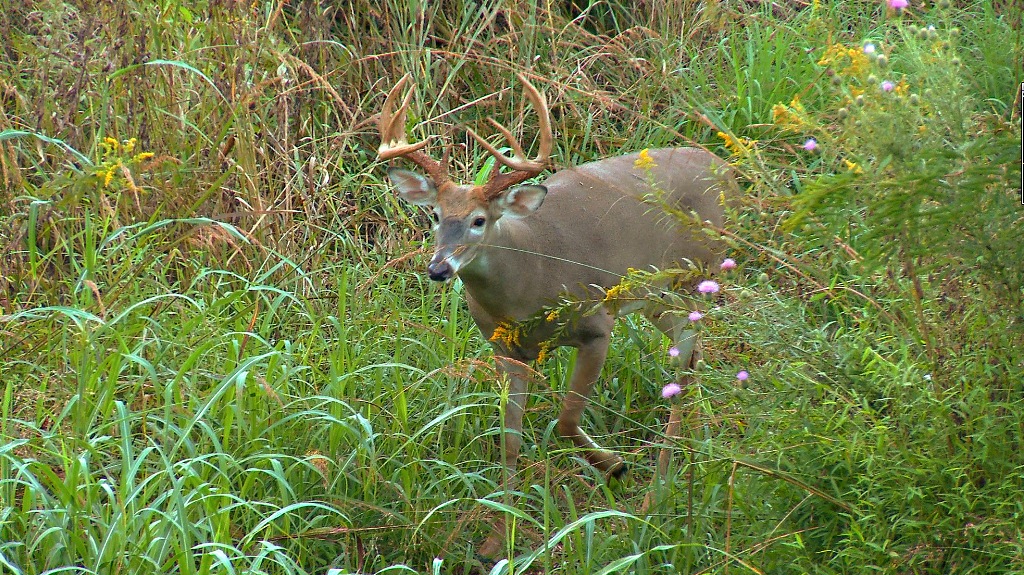
Most people do not realize that we are the only country in the world with this unique system of public lands that is available to everyone and most of it is open to hunting. A quick search on your state’s game and fish or natural resources website will yield all of the public lands accessible to you, both state and federal. Most have specific details about each area – maps, regulations, harvest data, etc.
Don’t forget about preparation! Just because you don’t have your own piece of hunting property doesn’t mean you can sit around all year waiting for the season. You don’t have to dedicate your time to planting food plots, putting out trail cameras, hanging tree stands, and all of the other activities that come with having your own property but you still need to use your time wisely! This means scouting, scouting, scouting.
Two of the details I mentioned earlier are the biggest components for scouting public land and you don’t even have to get off your couch. Maps and harvest data for specific locations can give you a great head start on your plan for the fall. Identifying map features such as pinch points and travel corridors for deer can save you time before you scout in the field. Looking at previous year’s harvest data will show you how much pressure will be in the area. Deer dislike pressured areas so if you’re willing to hike further than the next person, you’re one step closer to a public land bruiser.
After learning how our public lands came to be, it makes the thought of harvesting an animal on them that much more appealing. Thanks to people like Teddy Roosevelt who had great foresight to set aside lands for the American people, I’ll be trying my hand at a public land buck this fall.
Weston
GrowingDeer Intern
Kicking Deer Season Off In Kentucky – Episode #408
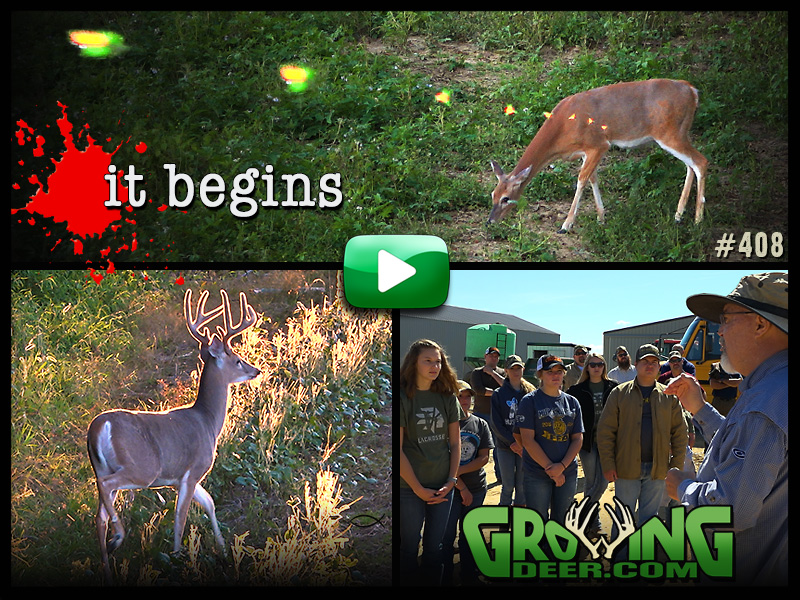 New Video
New Video
Join the GrowingDeer Team as they kick off their 2017 deer season in Kentucky. Arrows fly and venison hits the freezer! While on their trip, Grant speaks to a local FFA chapter about soil health, agricultural practices and forestry. Grant and the Team then travel to Nashville, Tennessee to help a landowner and his daughter develop their Proving Grounds!
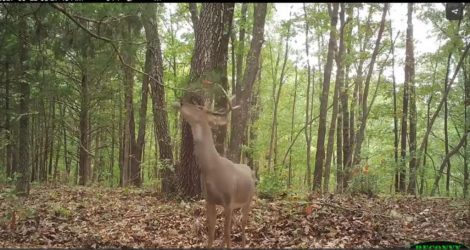 Short Clip:
Short Clip:
It’s mid-September and bucks are actively using our scrapes! Check out this short clip to see for yourself!
New Weekly Blog:
Here’s an easy recipe that everyone is sure to love: Grilled Venison Meatloaf!
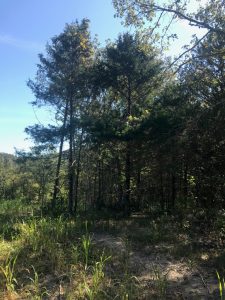
Tip of the Week:
Eastern red cedars can be great trees to hang tree stands in. Cedars provide lots of cover for hunters that will last the entire season.
Venison Recipe: Grilled Mini Meatloaves
You do not have to be a hunter to enjoy venison. This recipe is proof! Several members of my family do not hunt yet they all enjoy a good meatloaf. In fact, this recipe is my father Larry’s favorite.
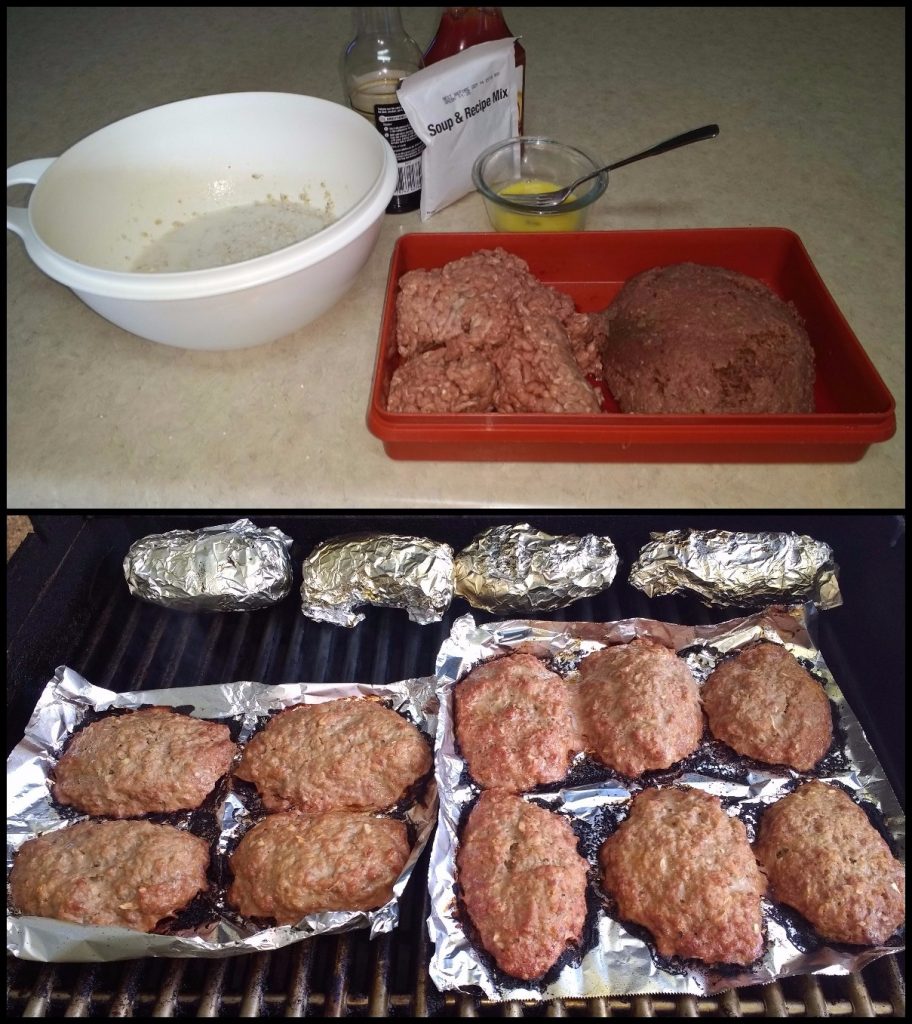
Keep in mind recipes are just suggestions. This will work with your favorite meatloaf recipe. I would recommend you use part venison and part ground chuck. The ground chuck has more fat in it and keeps the venison moist. I shape these into mini-meatloaves because they cook in 30 minutes, quick enough for a workday supper.
Ingredients:
1 cup quick cooking oatmeal
1 1/3 cup milk
1 package dry onion soup mix
1 egg, beaten
1/4 cup ketchup
1 tablespoon Worcestershire sauce
1 1/2 lbs. ground venison
1 lb. ground chuck
- Mix oatmeal with milk and let stand for 5 minutes.
- Mix in all other ingredients.
- Shape into 10 to 12 mini meatloaves.
- Place on foil that has been sprayed with cooking spray.
- Cook on grill over medium heat for about 30 minutes or until done (internal temperature of 165 degrees).
Enjoy!
Jamie, GrowingDeer
Deer Hunting Strategies: Scouting For The Coat?
Many deer hunters are now busy scouting for deer season. When you’re scouting you should not only pay attention to where the deer are, but what they look like. Specifically, what does their coat look like? Pay attention to those trail camera images. Do they reveal deer that suddenly have spots of red and brown hair? Do the coats of these deer appear shaggy and unhealthy? This small detail can yield big dividends when planning where to hang your next stand. Read on to understand why.
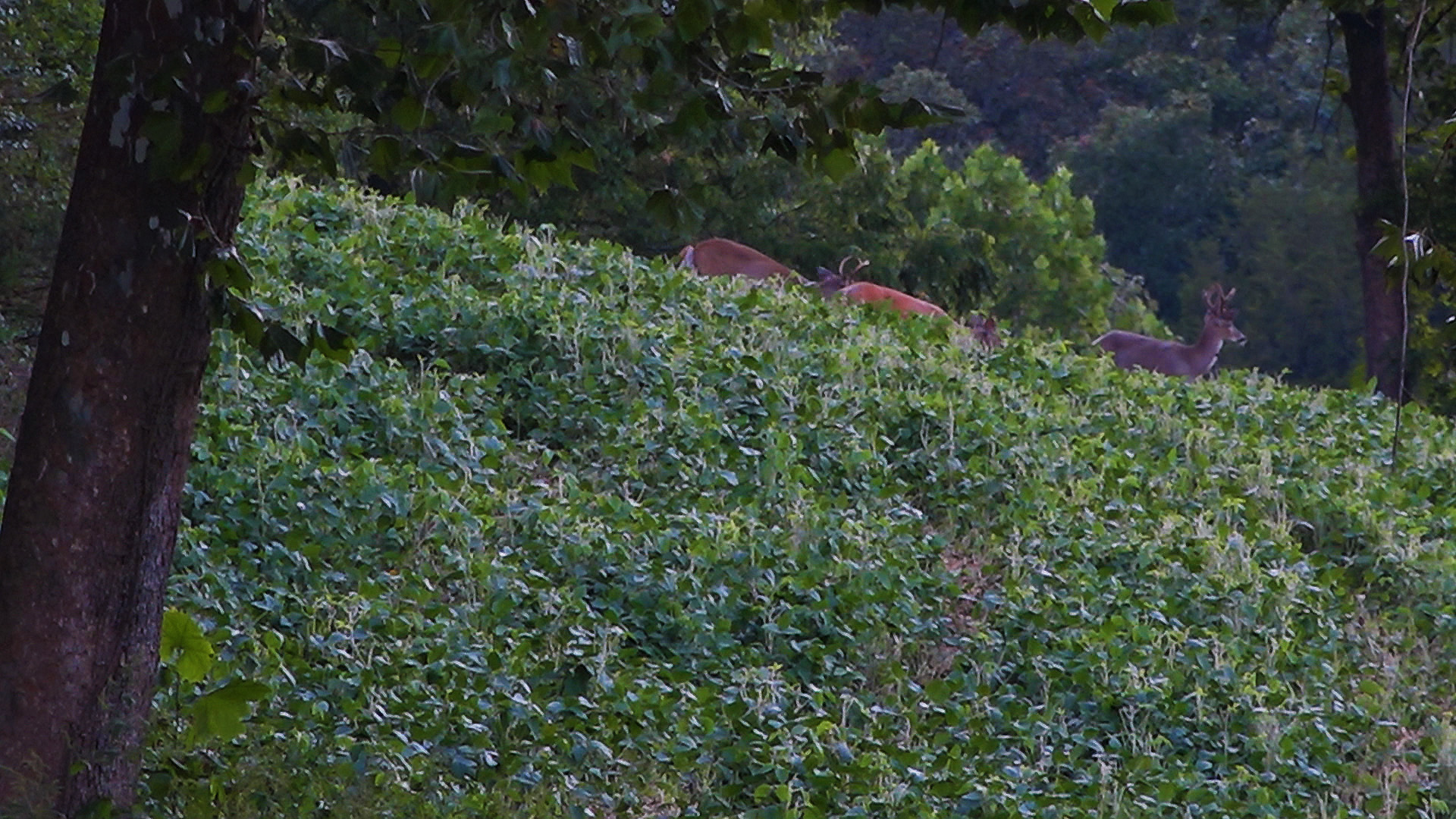
White-tailed deer appear this way because deer molt or shed their hair twice a year. This time of year the short reddish hair falls out and is replaced by longer gray hair. The short reddish hair was their summer coat. The reddish or lighter color hair reflects the sun’s energy compared to the darker winter hair which absorbs the sun’s energy in the form of heat.
During the spring the opposite is true. During late March (typically, depending on location) deer shed the darker gray, longer hair and replace it with the thinner, shorter reddish hair. The timing of molting seems to be trigged by factors other than current conditions.
This information can be used by hunters to pick stand locations during the early season. For example, let’s assume deer where you hunt have already started getting their winter coat and the temperatures are still warm or warmer than normal. Deer won’t move much during daylight hours and will bed in areas where they can stay cool during these conditions. This means deer will likely bed on north facing slopes or in shady areas where there’s a breeze. They probably won’t move much during the heat of the day and will typically arrive at food sources just at dark or later.
You can use this information to select stand sites based on the deer’s coat color and daily temperatures in your area. Understanding this simple biology can make you a more successful hunter!
Let us know what you are seeing by posting on our Facebook page! It’s a great way to get into conversation with other deer hunters.
Growing (and hunting) Deer together,
Grant
A Venison Recipe: Fast, Easy, Tender, Delicious
We eat a lot of venison at our house. Deer meat is on the menu several days each week: venison loin, tenderloin, roast, ground venison, venison breakfast sausage, Italian venison sausage (great in spaghetti sauce!), etc. Like many family cooks I always make enough for leftovers. Leftover venison roasts are often chopped up for use in burritos, stir fry, soups, stews, casseroles or simply as sandwich meat. The slow cooker/Crock-Pot has always been my go-to method for cooking venison. Cooking venison in a slow cooker always resulted in tender, flavorful meat. The secret to success in a slow cooker is to make sure there is plenty of liquid (chicken broth is my favorite) to cover the venison. Click here for one of my favorite venison roast recipes for the Crock-Pot.

The one problem with the slow cooker is that it is SLOW. If I forget to put something on early in the morning then we are out of luck for supper as most Crock-Pot recipes need to cook a minimum of 8 – 10 hours. I had heard that the new electric pressure cookers were cutting cooking times and making tender, flavorful meats. I decided to get one after talking to some friends and watching some videos online. I learned that they are not like the scary old stove top pressure cookers!
I was amazed at how well my first attempt at pressure cooking venison turned out. I even chose the cut of meat that is the most difficult to make tender, the venison ball roast. I took meat from the freezer around 9:00 a.m. and before noon I had a fantastic lunch ready with very little effort! The venison was completely frozen when it went into the Instant Pot. The result was tender, flavorful meat just perfect for burritos! I think it tasted much better than anything I have ever cooked in a Crock-Pot. If you have an electric pressure cooker (Instant Pot) you can try my recipe:
Pressure Cooker Mexican Venison Recipe
1 tablespoon canola oil
1 medium onion chopped (about 2/3 cup)
2/3 cup chopped green pepper
2 cloves minced garlic
1 ½ cups water
4 beef bouillon cubes
2 frozen venison ball roasts (about 2.5 lbs each)
2 tablespoons chili powder
2 tablespoons cumin
½ stick butter
- Turn the Instant Pot on sauté mode. Add oil and spread around. Then add onion, green pepper and minced garlic. Saute for a couple of minutes.
- Unwrap the beef bouillon cubes and put in the water. Add to pot.
- Add the frozen venison ball roasts.
- Sprinkle the roasts with the cumin and chili powder.
- Put the butter on top of the roasts. Put lid on and close/seal the pot.
- End the sauté mode. Change the setting on the Instant Pot to manual with a time of 80 minutes. Make sure the vent is pushed to seal. The meat will be cooked to the right internal temperature at 60 minutes, but the tenderness comes with that last 20 minutes of pressure cooking.
- Let the pressure release naturally then remove the lid. Take the venison out and place on cutting board. Chop into ½” – 1” pieces. Put the venison back in the pressure cooker and mix with the remaining liquid. You can use the keep warm feature or take the meat out, let it cool and put in the refrigerator to eat later.
Serving suggestions: flour tortillas, refried or black beans, lettuce, onions, salsa, or cheese – anything you like and use as a burrito filling! The meat could also be used in your favorite Mexican casserole!
I hope you enjoy this as much as we do. I have to close this recipe/blog post by giving a big thank you to my friend Veronica. She has guided me through learning the Instant Pot and is a gourmet cook and an artist in the kitchen. Thanks Veronica!
If you’re unfamiliar with the Instant Pot there are tons of videos and recipes online. Take the time to watch a few and then get that Instant Pot out of the cabinet and start cooking! I know I will be using it a lot more after making this easy venison roast!
Tracy
Wildlife Interns: Hands On Experience Managing Whitetail Habitat And More
I have loved white-tailed deer and deer hunting since I was a very young boy. I have never wanted to be anything but a deer biologist. I think the key to being successful in any field is to have a passion for the line of work and seek the best training to prepare. To be a wildlife biologist that focuses on deer management, I strongly suggest students find ways to gain experience and make relationships with practicing deer managers. I consider gaining experience just as important as the coursework associated with obtaining a degree.
Over the past 15 years here at the Proving Grounds we have been blessed with mentoring and training 39 different interns. Our current interns are Tyler (Ty) McKinney and Weston (Wes) Mason. We asked the guys to tell us a little about themselves so our viewers can get to know them better.
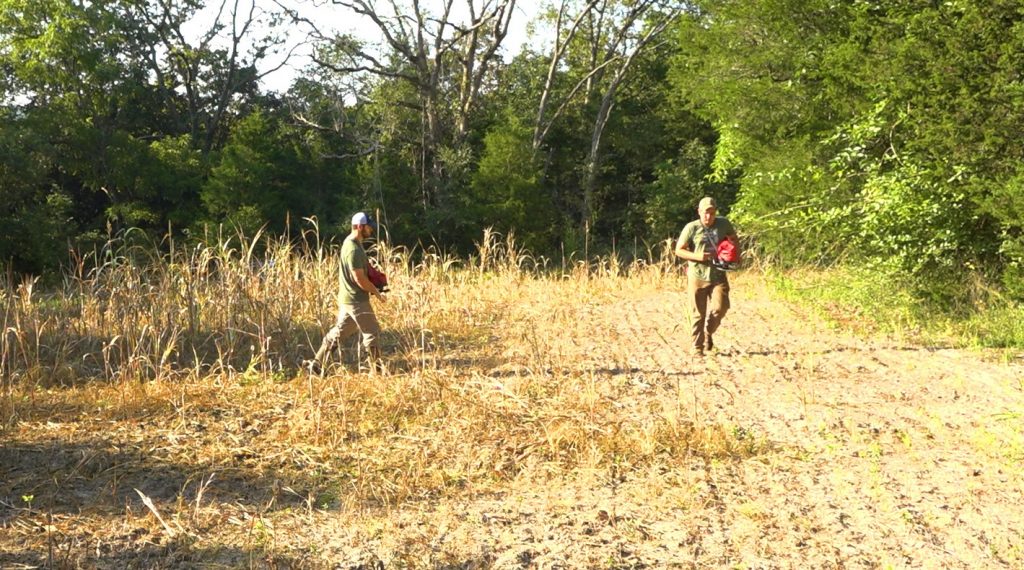
Ty is from Louisville, Illinois. He attended North Clay High School. Through high school Ty worked on his family cattle farm (beef market) and for a local 12,000 acre crop production farm in southern Illinois. Ty says, “Being able to work at The Proving Grounds is a true blessing and dream come true. I spent the majority of my senior year in high school watching every GrowingDeer episode.” He prefers to bow hunt as he finds this to be more of a challenge! He says, “Bow hunting allows you as the hunter to draw closer to the land and test your patience while studying the animal movements.” One of his most memorable hunting experiences was when he guided his younger brother to tagging his first whitetail in the fall of 2016. Ty’s hobbies are four-wheeler riding, farming, shooting bows and skeet shooting. Tyler is driven to do better every day and strives to learn from his mistakes. After his internship with GrowingDeer is finished he would like to go home to southern Illinois to manage/sell hunts on his family land. He thanks both his Mom and Dad for always pushing him to do his best and setting high goals for him, knowing he could reach them.
Wes is from Opdyke, Illinois. He graduated from Mount Vernon Township High School then attended the University of Louisiana at Monroe where he earned a Master’s of Science in Wildlife Biology. Wes spent the summer of 2016 interning with the SCA as a Shorebird Intern at the USFWS Long Island National Wildlife Refuge Complex. Wes says, “I prefer bow hunting because of the process of dialing in your bow over the off season to ensure you have the accuracy and precision to put the arrow where it needs to be. The challenge of being much closer to your prey is very exciting.” His favorite hunting experience has been waterfowl hunting in the Louisiana rice fields where he saw thousands of ducks overhead. A unique characteristic of Wes is that he is left handed – the only thing he does right handed is shoot a bow/gun! His hobbies and interests are related to being outside in general, seeing new places and watching Cardinals baseball. Wes says, “My primary drive is the desire to learn; increased knowledge brings an increased appreciation to whatever it is you are learning about.” He hopes to get a job related to the management of game animals (preferably deer or waterfowl) and be involved in increasing public knowledge of conservation and land stewardship. Wes would like to extend his thanks to the following folks: Dr. Kim Tolson from ULM; his Dad, Rob; his Mom, Rynda; his sister, Hannah; and his girlfriend, Amanda.
We look forward to spending more time with these guys this fall. Hopefully, we’ll be sharing some of their bow hunts as they help us reduce the deer herd here at The Proving Grounds!
GrowingDeer together,
Grant



